Anne Hathaway Cottage
I took this picture. I was too lazy to wait for the older couple to have their picture made. No idea who they are. Wish I'd hung around and taken a picture with no one in it. :)
Anne Hathaway's Cottage
Wikpedia
Anne Hathaway's Cottage is a twelve-roomed farmhouse where Anne Hathaway, the wife of William Shakespeare, lived as a child in the village of Shottery, Warwickshire, England, about 1 mile (1.6 km) west of Stratford-upon-Avon. Spacious, and with several bedrooms, it is now set in extensive gardens.
The earliest part of the house was built prior to the 15th century; the higher part is 17th century. The house was known as Hewlands Farm in Shakespeare's day and had more than 90 acres (36 hectares) of land attached to it; to call it a cottage is really a misnomer, as it is much larger than the term usually means. As in many houses of the period, it has multiple chimneys to spread the heat evenly throughout the house during winter. The largest chimney was used for cooking. It also has visible timber framing, typical of vernacular Tudor architecture.
After the death of Hathaway's father, the cottage was owned by her brother Bartholomew, and was passed down the Hathaway family until 1846, when financial problems forced them to sell it. However, it was still occupied by them as tenants when it was acquired in 1892 by the Shakespeare Birthplace Trust, which removed later additions and alterations. In 1969 the cottage was badly damaged in a fire, but was restored by the Trust.[1] It is now open to the public as a museum.
******************************
William Shakespeare's Home
I took this picture. I remember being tired and standing in line in order to go in. By using the tree to frame, I hid the commercial signs instructing how to go into the building, etc.
Again people in the picture. They just wouldn't leave. You'd think people would realize how folks would like pictures without them in it. The one guy just sitting and hanging out. 2nd thought - Wonder how many pictures I ended up in? LOL
William Shakespeare's Home (Internet)
William Shakespeare's Home
Wikipedia
Shakespeare's Birthplace is a restored 16th-century half-timbered house situated in Henley Street, Stratford-upon-Avon, Warwickshire, England, where it is believed that William Shakespeare was born in 1564 and spent his childhood years.[1][2] It is now a small museum open to the public and a popular visitor attraction, owned and managed by the Shakespeare Birthplace Trust.[3] It has been referred to as "a Mecca for all lovers of literature"
The house itself is relatively simple, but for the late 16th century it would have been considered quite a substantial dwelling.[2] John Shakespeare, William's father, was a glove maker and wool dealer, and the house was originally divided in two parts to allow him to carry out his business from the same premises.[1]
The building is not outstanding architecturally,[5] and typical of the times was constructed in wattle and daub around a wooden frame. Local oak from the Forest of Arden and blue-grey stone from Wilmcote were used in its construction, while the large fireplaces were made from an unusual combination of early brick and stone, and the ground-floor level has stone-flagged floors.[1][5]
The plan of the building was originally a simple rectangle. From north-west to south-east, the ground-floor consisted of a parlour with fireplace, an adjoining hall with a large open hearth, a cross passage, and finally a room which probably served as John Shakespeare's workshop. This arrangement was mirrored on the first-floor by three chambers accessed by a staircase from the hall, probably where the present stairs are sited. Traditionally, the chamber over the parlour is the birthroom. A separate single-bay house, now known as Joan Hart's Cottage, was later built onto the north-west end of the house, and the present kitchen was added at the rear with a chamber above it.[6]
History
Shakespeare's Birthplace
(as seen between 1890 and 1905)
(as seen between 1890 and 1905)
Records show that in 1552 John Shakespeare was fined for leaving a pile of muck outside his home in Henley Street, proving that he resided in a house there at the time. In Jephson's account of Shakespeare's time in Stratford he states that at the time of Shakepeare's birth his father was renting the property and that ten years later he was able to purchase two freehold houses in Henley Street. [7] The house remained in the family until it was handed down for the final time to William Shakespeare’s daughter and, given that he was born in 1564, it is fairly certain that he was born and brought up there.[8]
Ownership
Shakespeare's birthplace as it appeared in 1847 before restoration. Engraved by W. J. Linton after a drawing by Edward Duncan.
Under the terms of Shakespeare's will, the ownership of the whole property (the inn and Joan Hart's cottage) passed to his elder daughter, Susanna. In 1649 it passed to her only child, Elizabeth, and then in 1670 to Thomas Hart. Hart was the descendant of Shakespeare's sister, Joan, whose family had continued as tenants of the smaller house after her death in 1646. The entire property remained in the ownership of the Harts until 1806, when it was sold to a butcher, Thomas Court, who also took over the running of the Swan and Maidenhead Inn. The smaller house remained occupied by Thomas Hornby, another butcher, to whom the Harts had let it when they moved away from Stratford in the 1790s.[6] Mrs Hornby continued as a tenant and custodian of Shakespeare's Birthplace until her rent was increased in 1820.[2]
Acquisition
Shakespeare’s birthplace, Henley Street, Stratford On Avon, Ernest
Edwards, 1863, from Jephson, J., & Edwards, E. (1864). Shakespere,
his birthplace, home, and grave
The restoration was based upon this engraving, first published in The Gentleman's Magazine in July 1769. Benjamin Cole engraving after a drawing by Richard Greene.
Restoration
Once the Committee (Trust) had acquired the building, restoration work was able to proceed. Originally the Birthplace formed part of a terrace with later houses built either side,[6] and the first stage in its conservation was their destruction, thought necessary to avoid the risk of any fire spreading from them to the Birthplace.[5]Old photographs reveal that early in the 19th century, part of the front of the Birthplace was faced with brick. This was an economical alternative to the common practice of replacing timber-framed buildings and rebuilding in brick in 18th century England. Referring to an engraving of 1769 as well as taking into account surviving architectural evidence, a reconstruction carried out by the Trust between 1857 and 1864 has restored the outside of the building to its 16th century state.[5][6]
Present day
Garden at the rear of the house (photo 2006)
The view towards Henley Street from the upper floor of Shakespeare's Stratford upon Avon birthplace.
The Birthplace recreates a picture of family life at the time of Shakespeare complete with period domestic furnishings, a glass window inscribed with the signatures of visitors to the house over the centuries, and John Shakespeare's glove making workshop.[6]
The walled garden at the back of the house has been specially planted with flowers and herbs that would have been known in Shakespeare's time.[8]
************************************
Random businesses in town
An Inn


Optricians Office in the town of Stratford Upon Avon.
Statford Upon Avon
Wikipedia
Stratford-upon-Avon (/ˌstrætfərd əˌpɒn ˈeɪvən/) is a market town and civil parish in Warwickshire, England, on the River Avon, 101 miles (163 km) north west of London, 22 miles (35 km) south east of Birmingham, and 8 miles (13 km) south west of Warwick.[2] The estimated population in 2007 was 25,505,[3] increasing to 27,445 at the 2011 Census.
Stratford was originally inhabited by Anglo-Saxons and remained a village before the lord of the manor, John of Coutances, set out plans to develop it into a town in 1196. In that same year, Stratford was granted a charter from King Richard I to hold a weekly market in the town, giving it its status as a market town. As a result, Stratford experienced an increase in trade and commerce as well as urban expansion.
The town is a popular tourist destination owing to its status as birthplace of English playwright and poet William Shakespeare, and receives approximately 2.5 million visitors a year.[4] The Royal Shakespeare Company resides in Stratford's Royal Shakespeare Theatre.
Origin of name
The name is a combination of the Old English strǣt, meaning 'street', ford, indicating a shallow part of a river or stream, allowing it to be crossed by walking or driving and avon which is the Celtic word for river.[5][6] The 'street' was a Roman road which connected Icknield Street in Alcester to the Fosse Way. The ford, which has been used as a crossing since Roman times, later became the location of Clopton Bridge.[7][8][9] A survey of 1251-52 uses the name Stratford for the first time to identify Old Stratford and the newer manors.[8][10] The name was used after that time to describe the area specifically surrounding the Holy Trinity Church and the street of Old Town.[8]Early history
The settlement which later became known as Stratford was first inhabited by Anglo-Saxons following their 7th century invasion of what would become known as Warwickshire.[5][11] The land was owned by the church of Worcester and it remained a village until the late 12th century when it was developed into a town by lord of the manor, John of Coutances.[8] John laid out a new town plan in 1196 based on a grid system to expand Stratford and allow people to rent property in order to trade within the town.[5][9][12] Additionally, a charter was granted to Stratford by King Richard I in 1196 which allowed a weekly market to be held in the town, giving it its status as a market town. These two charters, which formed the foundations of Stratford's transformation from a village to a town, make the town of Stratford over 800 years old.[9][13]John's plans to develop Stratford into a town meant Stratford became a place of work for tradesmen and merchants.[9] By 1252 the town had approximately 240 burgages, as well as shops, stalls and other buildings.[8] Stratford's new workers established a guild known as the Guild of the Holy Cross for their business and religious requirements.[
Many of the town's earliest and most important buildings are located along what is known as Stratford's Historic Spine, which was once the main route from the town centre to the parish church. The route of the Historic Spine begins at Shakespeare's Birthplace in Henley Street. It continues through Henley Street to the top end of Bridge Street and into High Street where many Elizabethan buildings are located, including Harvard House. The route carries on through Chapel Street where Nash's House and New Place are sited. The Historic Spine continues along Church Street where Guild buildings are located dating back to the 15th century, as well as 18th and 19th century properties. The route then finishes in Old Town, which includes Hall's Croft and the Holy Trinity Church
Old Town, which includes Hall's Croft and the Holy Trinity Church.[12]
Historic map of Stratford in 1902
David Garrick helped Stratford to become a tourist destination
The Cotswolds, located close to Stratford, was a major sheep producing area up until the latter part of the 19th century, with Stratford one of its main centres for the processing, marketing, and distribution of sheep and wool. Consequently, Stratford also became a centre for tanning during the 15th–17th centuries.[11] Both the river and the Roman road served as trade routes for the town.
Modern history
Despite Stratford's increase in trade, it barely grew between the middle of the 13th century and the end of the 16th century, with a survey of the town showing 217 houses belonged to the lord of the manor in 1590. Growth continued to be slow throughout the 17th century, with hearth tax returns showing that at most there were approximately 429 houses in the town by 1670. However, more substantial expansion began following several enclosure acts in the late 18th century, with the first and largest new development by John Payton who developed land on the north side of the old town, creating several streets including John Street and Payton Street.[8][16]Before the dominance of road and rail, Stratford was the gateway to the network of British canals.[17]
In 1769, the actor David Garrick staged a major Shakespeare Jubilee over three days which saw the construction of a large rotunda and the influx of many visitors. This contributed to the growing phenomenon of Bardolatry which made Stratford a tourist destination
Modern history
Despite Stratford's increase in trade, it barely grew between the middle of the 13th century and the end of the 16th century, with a survey of the town showing 217 houses belonged to the lord of the manor in 1590. Growth continued to be slow throughout the 17th century, with hearth tax returns showing that at most there were approximately 429 houses in the town by 1670. However, more substantial expansion began following several enclosure acts in the late 18th century, with the first and largest new development by John Payton who developed land on the north side of the old town, creating several streets including John Street and Payton Street.[8][16]Before the dominance of road and rail, Stratford was the gateway to the network of British canals.[17]
In 1769, the actor David Garrick staged a major Shakespeare Jubilee over three days which saw the construction of a large rotunda and the influx of many visitors. This contributed to the growing phenomenon of Bardolatry which made Stratford a tourist destination
Tourism
The regular large influx of tourists is the major source of the town's prosperity,[39] receiving between 2.5 million and 3 million visitors annually.[4][41] Stratford is a major English tourist town due to it being the birthplace of William Shakespeare, whom many consider the greatest playwright of all time.[39][42] In 2010 the District Council spent £298,000 on tourism promotion[43] and supports an official open-top tour bus service. In 2010 Stratford-on-Avon District Council launched a re-branded official tourism website for the Stratford area called Discover Stratford[44] after opening a new tourist information centre on Henley Street in May 2010,[45] which has since moved back to the original location on Bridgefoot.[46]Culture
Theatre
The first real theatre in Stratford was a temporary wooden affair built in 1769 by the actor David Garrick for his Shakespeare Jubilee celebrations of that year to mark Shakespeare's birthday. The theatre, built not far from the site of the present Royal Shakespeare Theatre, was almost washed away in two days of torrential rain that resulted in terrible flooding.[18][19]To celebrate the 300th anniversary of Shakespeare's birth in 1864 the brewer, Charles Edward Flower, instigated the building of a temporary wooden theatre, known as the Tercentenary Theatre, which was built in a part of the brewer's large gardens on what is today the site of the new, and temporary, Courtyard Theatre. After three months the Tercentenary Theatre was dismantled, with the timber used for house-building purposes.[64]
In the early 1870s, Charles Flower gave several acres of riverside land to the local council on the understanding that a permanent theatre be built in honour of Shakespeare's memory, and by 1879 the first Shakespeare Memorial Theatre had been completed. It proved to be a huge success, and by the early 20th century was effectively being run by the actor/manager Frank Benson, later Sir Frank Benson.[64] The theatre burned down in 1926, with the then artistic director, William Bridges-Adams, moving all productions to the local cinema. An architectural competition was arranged to elicit designs for a new theatre, with the winner, English architect Elisabeth Scott, creating the Royal Shakespeare Theatre we see on the riverside today. The new theatre, adjoining what was left of the old theatre, was opened by the then Prince of Wales, later Edward VIII, in 1932. The new theatre had many illustrious artistic directors, including the actor Anthony Quayle. Sir Peter Hall was appointed artistic director (designate) in 1959, and formed the Royal Shakespeare Company (RSC) in 1961.
The Other Place theatre
The Rudolf Kempe Society, established in memory of Rudolf Kempe, above, have a studio for performances and teaching along Stratford's Waterside
Stratford is also home to The Bear Pit Theatre which was founded in 2008 as a voluntary organisation. It has 100 seats and is part of the Little Theatre Guild.[67][68] The Attic Theatre, located next to the river, hosts productions from Tread the Board theatre company.[69]
The Waterside Theatre (which is not part of the Royal Shakespeare Theatre complex) re-opened in December 2004, then closed again in September 2008. During this span, the theatre housed the Shakespearience visitor attraction.[70] This has now been turned into the Clore Learning Centre, the Royal Shakespeare Company's education and events venue.
In 1986, Stratford-upon-Avon was the venue for the disastrous provincial try-out of the ill-fated musical Carrie, based on the Stephen King novel.
Music
Stratford ArtsHouse, previously the Civic Hall, is home to Orchestra of the Swan, an international chamber orchestra staging up to 10 orchestral concerts with international soloists per year. [71] Kempe Studio of The Rudolf Kempe Society, whose patron is Dame Judy Dench, is based in a house at 58 Waterside called The Muses and hosts musical events and masterclass lessons.[72][73] No. 1 Shakespeare Street holds regular evenings of live music.[74]Museums and Shakespeare's houses
Tudor World is a museum which explores the time when Shakespeare lived. It is based in a Grade II* listed town centre Tudor property and is the only museum in the country dedicated to Tudor times. Every week there is a walk around the town with Shakespeare.[75] The Mechanical Art and Design museum, but better known as MAD museum, is a museum in Henely Street of "brilliant-but-bonkers machines" made by Kinetic artists. Items on show include mechanised flipbooks and a musical typewriter.[76]
Nash's House, and the gardens of New Place
In addition, King Edward VI School, located on the corner of Church Street and Chapel Lane, is a grammar school thought to have been attended by William Shakespeare. In 2016, the school room where Shakespeare is believed to have studied opened to visitors.[77]
Literature
Stratford has one library, located in Henley Street within a medieval building.[12] Since 2008, Stratford has hosted the Stratford-upon-Avon Literary Festival, which holds two literary events a year, with one event in spring and a shorter festival in autumn.[78][79] The festival has talks from celebrity guests, workshops and educational programmes and has become one of the most noted literary festivals in the country,[80] with speakers including: Kirsty Wark, Alan Johnson MP, Baroness Shirley Williams, Tom Kerridge, Sir Tim Rice, John McCarthy, Michael Rosen, Howard Jacobson, Jeffrey Archer, Michael Palin, Jeremy Paxman, Alastair Campbell and Paul Merton.[81]Shakespeare's celebrations
Every year, Shakespeare's birthday is celebrated in Stratford. The celebration takes place over two days on the weekend closest to 23 April, the date of his birth, and includes musical performances, drama and a parade through the town.[82] In 2016, events were held in Stratford to mark the 400th anniversary of Shakespeare's death.[83]Pubs
The Garrick Inn is reputedly the oldest pub in Stratford, with an inn existing on the site since medieval times.[84][85] The Dirty Duck, located along Waterside, is a popular pub for actors performing at the nearby RSC theatres.[86]For the last ten years, the Campaign for Real Ale (CAMRA) has held a beer and cider festival in the town.[87]
Streets
Henley Street
Henley Street, one of the town's oldest streets, underwent substantial architectural change between the sixteenth and nineteenth centuries. John Shakespeare's large half-timbered dwelling, purchased by him in 1556, was in 1564 the birthplace of his son William. According to a descriptive placard provided for tourists there,"The property remained in the ownership of Shakespeare's direct descendants until 1670, when his granddaughter, Elizabeth Barnard, died. As she had no children, Elizabeth left the estate to her relative Thomas Hart, Shakespeare's great-nephew. The main house became a tenanted inn called the Maidenhead (later the Swan and Maidenhead) following the death of John Shakespeare in 1601. Members of the Hart family continued living in the small adjoining cottage throughout the century."At the end of the 19th century, Edward Gibbs "renovated" the building to more closely represent the original Tudor farmhouse. Adjacent to Shakespeare's Birthplace stands the Shakespeare Centre, completed in 1964 and not far from the Carnegie Library, opened in 1905.
The large half-timbered building which now comprises numbers 19, 20 and 21 was formerly the White Lion Inn.[88] It is first mentioned in 1603.[89] and was adjoined on the east by a smaller inn called the "Swan". In 1745 the latter was purchased by John Payton, who also acquired the "Lion" five years later and rebuilt the whole premises on a greatly enlarged scale. (Cal. of Trust Title Deeds, no. 147.) The work was completed by James Collins of Birmingham, builder, in 1753. (Contract, Trust Title Deeds, no. 167.) Payton "brought the house into great vogue"[90] though Byng in 1792 complained that "at the noted White Lion, I met with nothing but incivility" (cited from Torrington Diaries (ed. Andrews), iii, 152).[88] Payton was succeeded as innkeeper by his son John, and its reputation as one of the best inns on the Holyhead road must have contributed not a little to the prosperity of the town. Garrick stayed at the "White Lion" during the Jubilee of 1769 (Saunders MSS. 82, fol. 20)[88] and George IV, as Prince Regent, visited it when he came to Stratford in 1806.[91] Its great days came to an end after John Payton the younger sold it to Thomas Arkell in 1823.[88] The building is now home to the Enchanted Manor Museum at the Creaky Cauldron and Magic Alley; the Box Brownie Café; Doug Brown's Really Good Gift Company; and the Not Just Shakespeare Tourist Information Centre.
Henley Street is now a major tourist and shopping precinct with many al fresco cafés and street entertainers.
Sheep Street
Some of the many cafés and restaurants along Sheep Street
As the name suggests Sheep Street, which leads down from the Town Hall to Waterside and the RST, was from early times and until the late 19th century, the area where sheep, brought from the neighbouring Cotswold Hills to be bought and sold.[11] Today it is the restaurant centre of the town.
The Shrieves House is one of the oldest still lived in houses in the town and Shakespeare is said to have based his character of Sir John Falstaff on one of the residents, his godson's uncle. Oliver Cromwell is thought to have stayed here in 1651. He wrote a letter from the town to Lord Wharton on 27 August 1651,[93] before the Battle of Worcester.
Behind The Shrieves House is a museum called "Tudor World" with recreations of 16th century life in theatrical settings.
Just off Sheep Street is Shrieves walk, a very quaint walkway with several small independent stores, including a Vintage Clothing shop.
Waterside and Southern Lane
Statue of Falstaff in Bancroft Gardens
The Bancroft Gardens[94] and river area is a very popular place for people watching, enjoying picnics and river activities. In the summer the River Avon is busy with rowing boats, motor boats and river cruises. The Birmingham to Stratford Canal is busy with colourful narrowboats passing through or mooring up in the canal basin Stratford-upon-Avon Canal. There are often jugglers, fire-eaters and magicians entertaining the public on the lawns. On the edge of the gardens is a water fountain, known as the Swan Fountain. It was unveiled in 1996 by the Queen Elizabeth II to recognise that Stratford has been a market town since 1196. It is from here the Stratford Town Walk meet every day (even Christmas Day), to offer a guided walking tour of the town. The tour passes the Shakespeare houses, Royal Shakespeare Theatres, 15th century timber-framed buildings, William Shakespeare's school and visits Holy Trinity Church where Shakespeare was baptised and is buried.
Waterside is also the location of The Dirty Duck pub which is frequented by actors from the nearby RSC theatres, theatre critics and theatregoers.[86]
Other attractions
Harvard House is located at 26 High Street. Other attractions include the Stratford Butterfly Farm, which is on the eastern side of the river and the Bancroft Gardens and Stratford Armouries located three miles (4.8 km) from the centre of Stratford on Gospel Oak Lane.Each year on 12 October (unless this is a Sunday, in which case 11 October) Stratford hosts one of the largest mop fairs in the country. Ten days later, the smaller Runaway fair is held.[95]
Transport
Stratford is 22 miles (35 km) from the UK's second largest city, Birmingham, and is easily accessible from junction 15 of the M40 motorway. The 7 miles (11 km) £12 million Stratford Northern Bypass opened in June 1987 as the A422.Stratford-upon-Avon railway station has good rail links from Birmingham (Snow Hill station, Moor Street station) and from London, with up to seven direct trains a day from London Marylebone. Stratford-upon-Avon Parkway railway station opened on 19 May 2013 to the north of the town.
The Stratford on Avon and Broadway Railway Society aims to re-open the closed railway line from Stratford-upon-Avon to Honeybourne, with a later extension to Broadway, Worcestershire. The Honeybourne Line is being extended towards Honeybourne from Cheltenham Racecourse to connect with the Cotswold Line. The Cotswold trains run by Great Western Railway (train operating company) go to Worcester Shrub Hill, Worcester Foregate Street, Great Malvern and Hereford westwards and eastwards to Oxford, Reading and London Paddington. Rail passengers currently have a very long and inconvenient journey via Birmingham Moor Street (changing here for Birmingham New Street) or continuing on via Birmingham Snow Hill, and onwards to reach Worcester Shrub Hill and places westwards. Rail passengers heading eastwards to Oxford and Reading would have to change trains at Banbury. The Stratford-upon-Avon and Midland Junction Railway connected Stratford with the main line of the London and North Western Railway at Blisworth until passenger trains were withdrawn in 1952.[96]
The town has numerous cycle paths, and is the terminus of the Stratford-upon-Avon Canal where it meets the Avon. A park and ride scheme was launched in 2006. The Stratford greenway is a 5 miles (8.0 km) traffic free cycle path, which used to be part of the rail network until the early 1960s and is now part of the Sustrans National Cycle Network (routes NCR 5 and NCR 41). Starting from town it heads along the river and racecourse towards Welford-on-Avon and Long Marston with a cycle hire and café available at the start of the Greenway at Seven Meadows Road.[97]
The manually powered Stratford-upon-Avon chain ferry was opened in 1937 and links Waterside, roughly halfway between the Royal Shakespeare Theatre and Holy Trinity Church, with the water meadows on the opposite side of the river. It was the last of its kind to be built in Britain.[98]
Birmingham airport is 18 miles (29 km) to the north-west, with scheduled flights to many national and international destinations.
Education
Part of King Edward VI Grammar School
William Shakespeare is believed to have studied at King Edward VI school. Previously an all-boys school, from September 2013 up to 25% of the year 12 intake can be girls.[99] It is one of the few remaining grammar schools in England, selecting its pupils exclusively using the 11-plus examination. There is also an all-girls grammar school, Stratford-upon-Avon Grammar School for Girls, colloquially known as 'Shottery School' after its location in the village of Shottery, a short distance from the town centre. Finally, there is a non-selective secondary school, Stratford-upon-Avon High School, formerly known as the Hugh Clopton Secondary Modern School, which was demolished to make way for the new high school. There are no independent secondary schools in the town, but there are many primary schools, including St. Gregory's Catholic Primary School, Stratford-upon-Avon Primary School (often known locally as "Broad Street" due to its location), Bishopton Primary School, Willows C of E Primary School and Thomas Jolyffe Primary School both state and independent, as well as Stratford-upon-Avon College.
Sport
Stratford-upon-Avon Rugby Club is situated on Loxley Rd at their home ground Pearcecroft.[100] The club fields three senior sides and a colts under 18 team with the 1st XV currently playing in Midlands 1 (West).[101] The club also has a large mini and junior section.[102] Stratford-upon-Avon Cricket Club Ground is by the river opposite the Royal Shakespeare Theatre. The first match recorded there was in 1880; it has hosted first-class games since 1951 and women's One Day Internationals since 2005. Stratford Town F.C. are based at the DCS Stadium in Tiddington; they won the Midland Alliance in the 2012/3 season and were promoted to Division One South & West of the Southern Football League. The town's parkrun event started in February 2016 and operates on the Recreation Ground every Saturday at 9 am.Stratford Racecourse is located along the Luddington Road, about one mile from the centre of town which holds 18 meetings every year. It is a National Hunt course with an oval track of approximately a mile and a quarter and is considered to be one of the UK's leading small racecourses.[103][104]
Churches
- Holy Trinity Church, Stratford-upon-Avon[105]
- St Gregory's Catholic Church[106]
- St Andrew's Church Shottery[107]
- Stratford-upon-Avon United Reformed Church[108]
- Stratford-upon-Avon Methodist Church[109]
- First Church of Christ, scientist, Stratford-upon-Avon[110]
Notable people
With the RSC in the town, many famous actors have at some point lived or stayed Stratford or the surrounding villages. Some of these include:- William Shakespeare (1564–1616), English playwright and poet.
- Sarah Douglas (1952–), actress, best known for her film and TV career, was born and raised in the town.
- Simon Pegg, actor, studied at Stratford-upon-Avon College (was born in Gloucestershire, England)
- Jeffery Dench, actor, lived just outside Stratford in Clifford Chambers until his death in 2014
- David Bradley, actor known for his role in the Harry Potter films
- Marc Elliott actor, played Syed Masood on BBC EastEnders, from Stratford and attended St. Gregory's
- Labour MP and actor Andrew Faulds lived in Old Town, Stratford, until his death in 2000, aged 77
- Actress and Animator Sarah Ann Kennedy who grew up in Stratford. She is the voice of Miss Rabbit in Peppa Pig and Nanny Plum in Ben and Holly's Little Kingdom. She is also responsible for the creation of Crapston Villas, an animated soap on Channel 4
- Gordon Ramsay, noted celebrity chef, and star of several cooking related shows, moved to Stratford-Upon-Avon with his family in 1976 when he was five years old.
- The historic Stratford family (who took their name from the town)
- Adrian Newey, famous Formula 1 engineer.
- George Macaulay Trevelyan, historian
- J. B. Priestley died here.
- Arthur C. Clarke, author of 2001: A Space Odyssey, served with the RAF at Stratford-upon-Avon during the 1940s. Clarke later wrote the short story "The Curse", which takes place in a post-apocalyptic Stratford-upon-Avon.
- Former Secretary of State for War John Profumo was the MP for Stratford-upon-Avon 1950–1963.
- From 1901 to 1924, the romantic novelist Marie Corelli, real name Minnie Mackay, daughter of Charles Mackay, made her home, with her companion Miss Vyver, at Mason's Croft, Church Street, Stratford.
- English footballer Dion Dublin, who has played for Manchester United, Aston Villa, Celtic, and Coventry City, as well as the national team, lived with his wife and family in Stratford.
- Simon Gilbert and Neil Codling of the band Suede lived and were educated in Stratford.
- Members of indie bands Klaxons and Pull Tiger Tail all grew up and went to schools in Stratford before they moved to New Cross, London.
- W. W. Quatremain, local landscape painter
- Brad Moran, a former Australian Rules Footballer, grew up in Stratford before moving to Australia when he was 15.
- Andrew Pozzi (1992–), 110m hurdler born in Stratford-upon-Avon.
- John Krasinski (1979–) studied at The Royal Shakespeare Company.
- Quentin Willson (1957–), motoring expert, journalist and ex-Top Gear presenter, lives in Stratford
- Patrick Robinson (1963–), Casualty actor and Strictly Come Dancing contestant, lives in Stratford
- Craig Charles (1964–), actor, presenter and DJ known for playing Dave Lister in Red Dwarf and Lloyd Mullaney in Coronation Street has lived in Stratford.
- David Domoney (1963–), gardener, co-host of Love Your Garden, lives in Stratford
- Lord Digby Jones (1955–) lives near Stratford-upon-Avon and is Chairman of Governors at Stratford-upon-Avon College and Chairman of Grove Industries which is based in the town






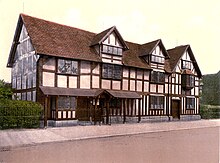

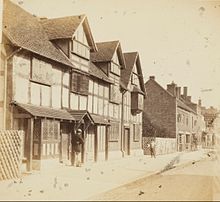
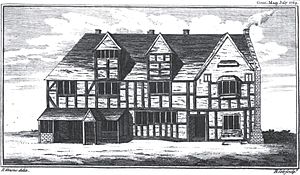
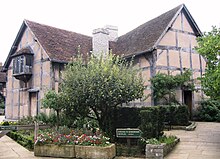



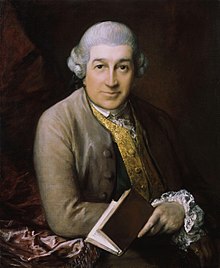

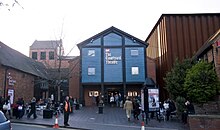


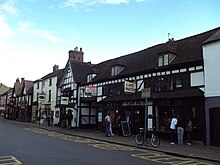




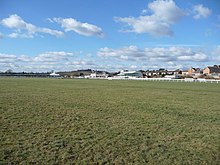

No comments:
Post a Comment